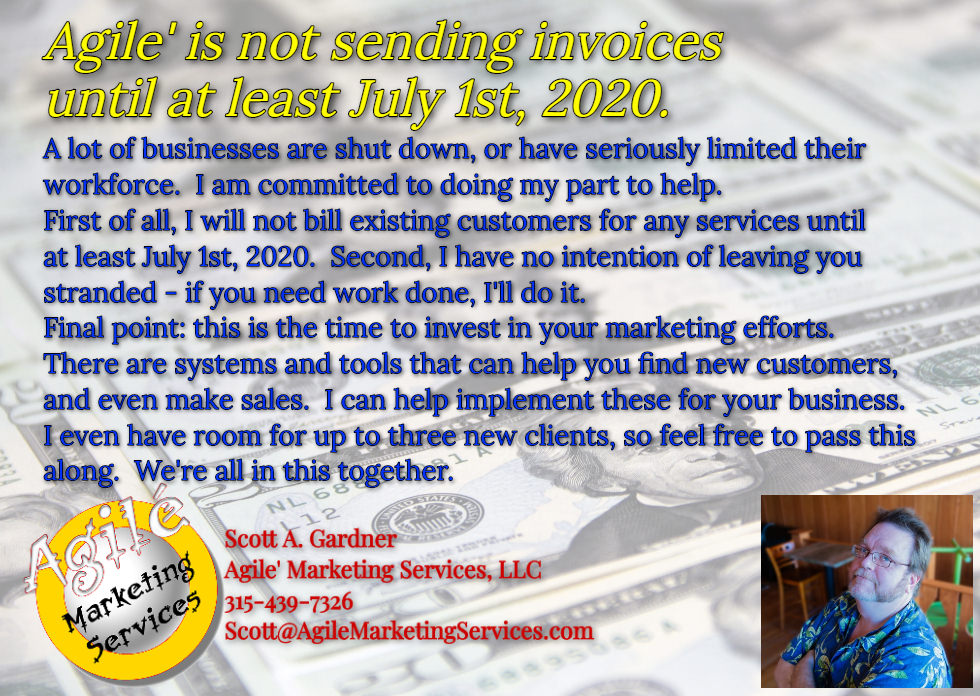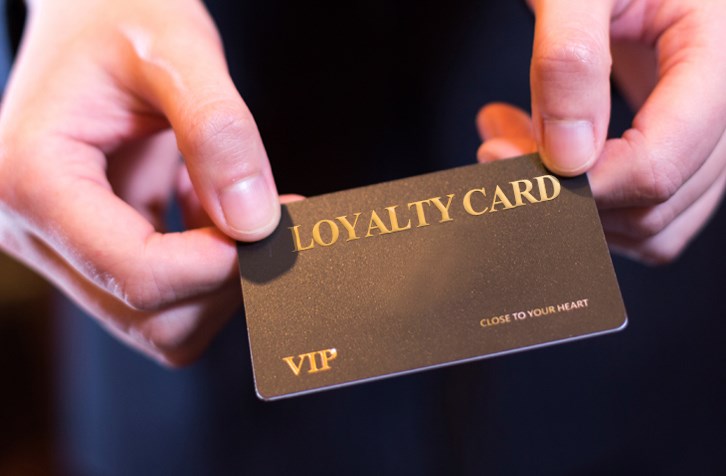There are three types, or levels, of loyalty programs you can implement:
1) Basic
2) Intermediate
3) Advanced
Let’s look at each of them individually.
Basic
Just about as simple as it gets for both the business and the customers. A basic program is great for places that want to promote one or two main products or services. All you need is some type of record for purchases, like a small card. The point here is to drive repeat business, make the customers get used to buying from you. You just need to train the people who interact with these customers to offer upsells and additional products.
These types of programs work great for shops that sell products like coffee, donuts, burgers, and hot dogs. If you have a business that provides a simple service, like rug cleaning, lawn mowing, or pet grooming – anything where a client might use your service on a fairly regular basis – you could also set up a basic loyalty program.
The program is a simple equation: pay for X number of products/services, get the next one free. The salesperson just has to ask if the customer has a membership card. If not, they provide them with one, and mark the card to show a purchase. When the customer’s card is completely marked, the salesperson takes the card and gives the customer the donut/cleaning/whatever for free, along with a new, unmarked card.
Instead of a physical card, you could also invest in producing an app people can download onto their smartphone. This obviously is more of an upfront expense for most businesses, but depending on how fast you go through cards, it might be more cost effective over time.
Pros: Low cost, ease of setup, and immediacy are the three main pros for starting a Basic loyalty program. If you put it together yourself, you could start a basic program for about $20 (500 cards and a small ink stamp). Spend more money for overnight printing, and you could start your basic program tomorrow.
Cons: You’ll be relying almost entirely on your point-of-contact salespeople for everything – promoting the program and driving additional sales. You also get absolutely no information about the individuals in your program, so you cannot make customized offers. You have no contact info for your customers, so there’s no way to get in touch with them and either ask them questions (”What else can we offer you?”) or give them information (”We’ll be carrying red widgets starting next week.”).
Intermediate
These take a little effort and cost to set up, but aren’t that difficult. Most loyalty programs I’ve seen fall into this category. The main tools used here (see the chapter Tools) are –
1) A list with personal information (first name and email address, at minimum) from each customer
2) A contact mechanism, like an email autoresponder, or text message sending system (SMS)
3) A series of automated messages
4) Offers – discounts, buy X get more free, etc.
These programs take a little more planning, a little more time, and a little more money. Your costs in time and money will depend on how complex you want to make your program, and what you want to get out of it. You can have people self-register for the program, and then have the program make offers to members and dole out rewards (like discount coupons, etc.) automatically. Or you can make the system behind the program more complex, and segment your members into groups and sub-groups, providing each segment with different offers and rewards. If you reward people for their loyalty, they are more likely to reward you with detailed information, like important dates (birth date, anniversary, and so forth), physical addresses, and shopping preferences.
Intermediate loyalty programs can help you expand the purchasing decisions of the members, allowing you to suggest related products and services. If they know, like and trust you, they are much more likely to buy additional products and services from you than to go looking elsewhere.
Pros: Most intermediate programs can be highly automated. With just a few minutes each week, a single person can examine the statistics generated by the program, and make minor tweaks to improve the process. Most of the cost in labor and money comes upfront, and allows you to almost “set it and forget it.” The person managing the system only has to spend major time when the system parts change, or when adding new complexities like additional products, services, or list segments. Because of the moderate amount of personal information you can acquire, you’re able to offer higher-profit products and services at the right times to the right list members.
Cons: Someone has to understand the program, and be in charge of managing it behind the scenes. They’re in charge of training point-of-contact people on what to expect from program members, like coupons and so forth. They also need to regularly read the data the system generates, interpret it, and make decisions based on that information. Learning all this can take considerable time and effort at the beginning. While intermediate programs do not have to be super-expensive, a decent system is far from free.
Advanced
By their nature, advanced loyalty programs are much more complex, much more expensive, and require a recurring investment of time by a team of people. However, most advanced systems track a tremendous amount of information, and the data provided by these programs can help you almost micro-promote to each member. A lot of membership programs run by major corporations are advanced systems. Wegman’s – a major grocery chain on the East Coast of the US – knows what its members shop for down to the individual SKUs, and their automated system can offer coupons for items the customer has shopped for in the past. I regularly get the same type of coupons from BJ’s Wholesale Club. Advanced systems can offer promotions via printed coupons sent through the mail, via SMS messages sent to a member’s phone, or even through custom apps that members use to shop. A truly advanced system will know how often you make purchases, the quality of products and services you prefer, the brands, the individual items. It will be able to offer you incentives based on important dates like holidays and birthdays. They can tell how much time you spend shopping, and prompt you to come in when they haven’t seen you in a while. The more information your membership program tracks, the more you can do with that information – including aggregating it and selling it to third parties. But that’s a whole other discussion!
Pros: Tons of information, depending on how much info you collect and how complex you make the collection system. The more information you collect, the more granular you can make your promotions. Offer a discount not just on widgets, but on yellow left-handed widgets; or to people in a certain zip code who get their lawns cut only on Thursdays. Track your costs, schedule needed supplies down to the hour, plan for increased profits.
Cons: Expensive investment. Set-up costs in time and human resources are much higher than either of the other categories. Tracking the system, as well as interpreting and using generated data usually takes a team of people, and is an ongoing investment. The more data points you track, the more the program parts need to be tweaked.










